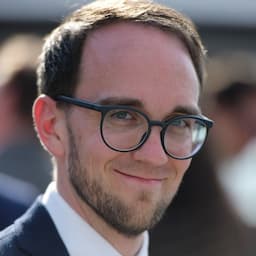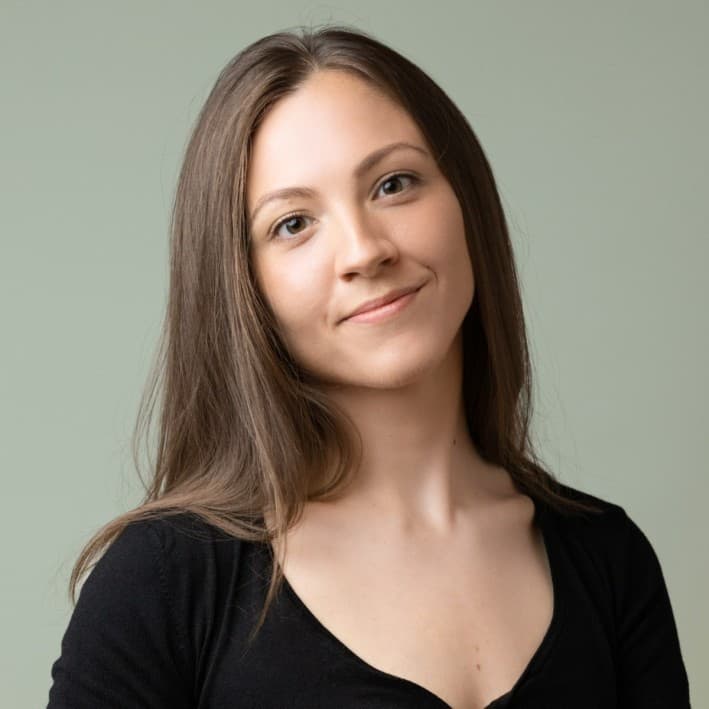/ EPISODE 48
On How to Optimize your OKR Implementation
GUESTS

Markus Müller
Co-Founder at Stealth Startup
Listen on
Listen on
Google Podcasts
Listen on
Pocket Casts
Listen on
Spotify
Listen on
Apple Podcasts
Listen on
Stitcher
or use this URL in your favorite podcast app: https://feeds.transistor.fm/dreams-with-deadlines
Episode notes
When Jenny Herald’s guest on this episode of Dreams with Deadlines went to work for the startup kick scooter company Circ in 2018, he was handed a beautiful blank canvas onto which he was quickly able to project a highly effective culture built on thoughtfully designed teams, dynamic communication and the robust use of data.
Markus Müller, who also guided product management teams at N26, is giving us a detailed look at the nimble management structures he favors, procedures that foster team progress, and rules of thumb that ensure successful OKR adoptions. It all starts, he says, with integrating this basic premise: Focus on outcomes, not inputs.
What you will learn
- Product development strategy and implementation in a fluid, multi-national company with distributed teams and competing priorities.
- A framework for grouping outward- and inward-facing teams into “tribes” dealing with consumer experience, field operations, and digital platform development.
- OKRs in the strategy-to-product pipeline context, including managing backlogs, the role of data, and building out effective systems for discovery.
- How to prioritize stakeholder meetings to pinpoint progress, ensure transparency and make room for necessary adjustments to the product roadmap.
- The Top Four pitfalls companies fall prey to in the implementation of OKRs.
Show notes
- [00:02:51] Markus shares an overview of his career, which encompasses entrepreneurial efforts, product management, coaching/consulting with startups in various stages of development.
- [00:03:52] About the juncture at which Markus entered the mobility space in 2018, joining a very small team at Circ, one of more than a dozen nascent kick scooter companies competing at that time for market share in Europe and beyond.
- [00:05:52] When people think of kick scooters, they’re imagining micro-mobility. But Markus’s focus was on creating the optimal customer experience based on a triad of mutually critical elements: hardware, software, and operations.
- [00:08:01] Markus explains how Circ grew and scaled product, design, and engineering teams over the course of 18 months, growing from zero to 80 team members while building out the well-oiled machine that ultimately was acquired.
- [00:09:17] The company was divided into “tribes,” which included:
- Consumer-Facing: Product marketing, customer experience, service and retention, partner and data integration.
- Field operations and fleet management function such as warehousing and repairs.
- Technology and development of the horizontal platform itself.
- [00:13:17] The wild ride that was Circ’s product strategy – often lacking cohesion and rife with internal jockeying and contradictions.
- [00:14:36] Instituting OKRs early in the process enabled Markus to work closely with his CTO and oversee his tribes effectively, and efficiently with clear communication and processes with measurable quarterly results and making staffing, operational, and other adjustments accordingly.
- [00:16:51] Markus summarizes the Circ organizational strategy and how OKRs were deployed to quantify progress along the way.
- [00:18:01] From Strategy to Product Pipeline: Do OKRs define the roadmap or vice versa? In the case of Circ, Markus was all about establishing objectives first. Once outcomes are well-defined, the roadmap (and roadmaps within roadmaps) can be broken down, morphing organically and incrementally quarter over quarter.
- [00:20:56] Managing unwieldy backlogs is a high priority for Markus, who very intentionally separates the engineering from the consumer/product pipelines with new projects and implementations placed in a category of their own.
- [00:22:16] How Markus keeps his team’s focused and engaged with new ideas, problems, and opportunities in a way that is productive and always advancing:
- A quick weekly opportunity assessment
- PMs take ownership of discrete initiatives
- Regular discovery to understand the nature of requests
- [00:24:05] Three key questions that PMs should ask when assessing opportunities:
- What is (or do I believe will be) the impact on our objectives?
- What will the expected effort deliver that impact?
- What is the expected confidence?
- [00:26:45] Jenny summarizes the goals of Markus’s carefully delineated discovery process, including helping teams to prioritize, focus and gauge workload capacities.
- [00:27:31] Markus believes discovery is most effective when explicit, time-boxed, and data-based to drive up confidence levels and depth of understanding/problem-solving.
- [00:30:12] How hard metrics and other qualitative data inform discovery and map back to objectives – a process that is driven by regular, high-level meetings in which key stakeholders exchange perspectives and challenge ideas based on defined progress.
- [00:32:09] How Markus structures meetings and pushes PMs to determine whether objectives are being met:
- 10 minutes is focused on where the team stands on OKRs
- 10 minutes to update any priority changes in the roadmap pipeline
- 10 minutes for a quick exchange of specifics around discovery
- 30 minutes during which stakeholders can challenge PMs to tease out whether their focus is on the right priorities for achieving big-picture goals
- The entire process includes documented comments to ensure transparency around project status, advancement and likelihood of success
- [00:35:10] Getting Real About Data: The value of attaching specialists to each of the business units at Circ, where the collection of data confers huge benefits – when it’s effectively, cross-functionally integrated. The alternative is data analytics and engineering that lags behind and never reaches fruition.
- [00:38:27] How Markus’ “central-decentral” approach enabled a balance between data engineers and their more team-based data scientists and analysts – all of which facilitated more give-and-take with PMs.
- [00:40:06] Marcus reflects on lessons learned about OKRs from his experiences at Circ, N26, and elsewhere:
- No. 1: The concept of outcome over output is very hard for teams to grasp/adopt.
- Incorporate a mix of top-down and bottom-up management to get timing right.
- Avoid over-engineering. Too often companies try to implement a variety of measures all at once. Pick just one or two to start.
- Challenge Points if you can prioritize OKRs, which is very difficult to do.
- [00:46:46] Quick Fire Questions for Markus:
- What’s your Dream with a Deadline? Implementing continuous OKRs for life, including nurturing business opportunities and long-term health.
- What do you like about the work you do? It’s inspiring people and helping them to find a passion and happiness and spread positivity in the day to day.
- What’s next for Markus? Starting up and running his own business, building something creative and fulfilling.
Relevant links
- An overview of the ICE Scoring Model
About our guest:
Markus Müller is a consultant and coach with a deep background in product management for successful startups such as the kick scooter company Circ and the mobile banking provider N26. He is an entrepreneur currently in stealth startup mode as well as a prolific author and thinker on such topics as OKRs, product discovery, and leadership.




